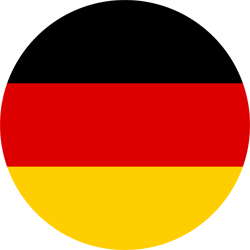The Common European Framework of Reference for Languages CEFR, is a guideline used to describe achievements of learners of foreign languages across Europe. Its main aim is to provide a method of learning, teaching and assessing which applies to all languages in Europe.
The Common European Framework divides learners into three broad divisions that can be divided into six levels:
Level A1 (course modules 1 and 2)
At the end of level A1 you can:
- understand and use familiar everyday expressions and very basic phrases aimed at the satisfaction of needs of a concrete type.
- introduce him/herself and others and can ask and answer questions about personal details such as where he/she lives, people he/she knows and things he/she has.
- interact in a simple way provided the other person talks slowly and clearly and is prepared to help.
A2 level (course modules 3 and 4)
At the end of level A2 you can:
- understand sentences and frequently used expressions related to areas of most immediate relevance (e.g. very basic personal and family information, shopping, local geography, employment).
- communicate in simple and routine tasks requiring a simple and direct exchange of information on familiar and routine matters.
- describe in simple terms aspects of his/her background, immediate environment and matters in areas of immediate need.
Level B1 (course modules 5, 6 and 11)
At the end of level B1 you can:
- understand the main points of clear standard input on familiar matters regularly encountered in work, school, leisure, etc.
- deal with most situations likely to arise while travelling in an area where the language is spoken.
- produce simple connected text on topics that are familiar or of personal interest.
- describe experiences and events, dreams, hopes and ambitions and briefly give reasons and explanations for opinions and plans.
Level B2
At the end of stage B2, you can:
- understand the main ideas of complex text on both concrete and abstract topics, including technical discussions in his/her field of specialisation.
- interact with a degree of fluency and spontaneity that makes regular interaction with native speakers quite possible without strain for either party.
- produce clear, detailed text on a wide range of subjects and explain a viewpoint on a topical issue giving the advantages and disadvantages of various options.
Level C1
At the end of the C1 stage, you can:
- understand a wide range of demanding, longer texts, and recognise implicit meaning.
- express ideas fluently and spontaneously without much obvious searching for expressions.
- use language flexibly and effectively for social, academic and professional purposes.
- produce clear, well-structured, detailed text on complex subjects, showing controlled use of organisational patterns, connectors and cohesive devices.
Level C2
At the end of the C2 stage, you can:
- understand with ease virtually everything heard or read.
- summarise information from different spoken and written sources, reconstructing arguments and accounts in a coherent presentation.
- express him/herself spontaneously, very fluently and precisely, differentiating finer shades of meaning even in the most complex situations.


